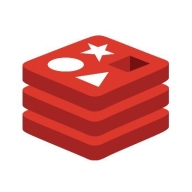

Amazon Timestream and Redis are both prominent database solutions competing in the data management category. Redis seems to have the upper hand due to its speed and versatility, although Amazon Timestream presents a strong feature set for specific use cases.
Features: Amazon Timestream efficiently manages time-series data with features such as automated data lifecycle management, seamless integration with AWS services, and real-time data processing. Redis offers a high-efficiency operations platform with support for various data types like strings, sets, and lists. It is particularly known for its rapid speed and flexibility, proving beneficial for real-time data processing applications.
Room for Improvement: Amazon Timestream could improve its ease of setting up and simplify its integration processes with third-party services. Enhancing user documentation and providing more pre-built integration options would also be beneficial. Redis could benefit from better management of complex data structures beyond caching, improved cost structure for more complex deployments, and the introduction of more comprehensive user support resources.
Ease of Deployment and Customer Service: Redis offers a straightforward deployment model with various hosting options and numerous integration points, along with responsive customer support. Amazon Timestream, part of the AWS ecosystem, provides extensive infrastructure support, but it may require more initial setup effort. Its customer service benefits from AWS's comprehensive support system, though simplicity versus comprehensive integration remains a consideration.
Pricing and ROI: Amazon Timestream uses a consumption-based pricing model advantageous for time-series workloads, potentially offering cost savings for specific uses. Redis, while possibly incurring higher costs depending on infrastructure requirements, often proves its value through speed and performance advantages that can lead to faster ROI. Choosing between them often depends on specific data handling needs and performance versus cost considerations.
| Product | Market Share (%) |
|---|---|
| Amazon Timestream | 6.2% |
| Redis | 3.1% |
| Other | 90.7% |


| Company Size | Count |
|---|---|
| Small Business | 11 |
| Midsize Enterprise | 3 |
| Large Enterprise | 8 |
Amazon Timestream offers a fully managed, maintenance-free database designed specifically for time series data management, characterized by simplicity, speed, and scalability for handling real-time operations.
Amazon Timestream provides a powerful solution for managing time series data by enabling users to aggregate decades of data quickly and merge updates seamlessly. It excels in simplicity, speed, and scalability, making it an ideal choice for real-time analytics and IoT data storage. Despite its benefits, there's room for improvement in query explanations and integration with other AWS services. Enhancements in data indexing, batch limits, cost management, and schema arrangement are ongoing efforts to better serve its users.
What are the key features of Amazon Timestream?Industries implement Amazon Timestream to automate real-time analytics and manage IoT telemetry data. In microgrid solar projects, it aids in assessing safety and charge states, while in IoT networks, it serves as a comprehensive data historian for device data analysis, enhancing decision-making and operational efficiency.
Redis offers high-speed, in-memory storage, renowned for real-time performance. It supports quick data retrieval and is used commonly in applications like analytics and gaming.
Renowned for real-time performance, Redis delivers high-speed in-memory storage, making it a favorite for applications needing quick data retrieval. Its diverse data structures and caching capabilities support a broad array of use cases, including analytics and gaming. Redis ensures robust scalability with master-slave replication and clustering, while its publish/subscribe pattern renders it reliable for event-driven applications. The solution integrates smoothly with existing systems, minimizing performance tuning needs. Although documentation on scalability and security could be improved, Redis remains cost-effective and stable, commonly utilized in cloud environments. Enhancing integration with cloud services like AWS and Google Cloud and refining GUI may improve usability.
What are the key features of Redis?Redis finds application across industries for tasks like caching to improve application performance and speed, minimizing database load. It enables real-time processing for session storage, push notifications, and analytics. As a messaging platform, Redis handles high traffic and supports replication and clustering for cross-platform scalability.
We monitor all Managed NoSQL Databases reviews to prevent fraudulent reviews and keep review quality high. We do not post reviews by company employees or direct competitors. We validate each review for authenticity via cross-reference with LinkedIn, and personal follow-up with the reviewer when necessary.